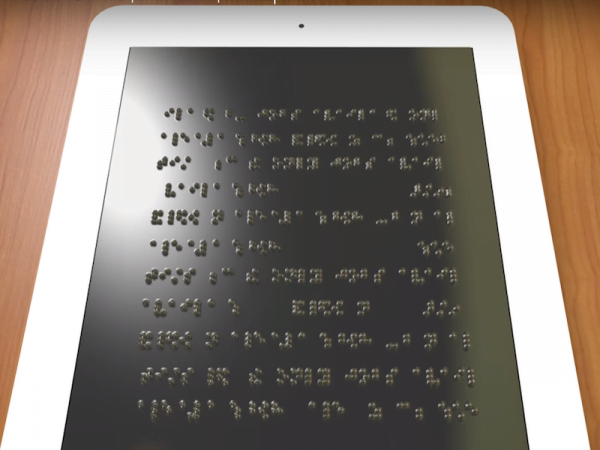
While apps like Siri and dictation software might be helpful for tablet users who are visually impaired, those services can only go so far — especially if you want to do something like read a long-form article or spreadsheet, something equally as extensive on a Surface or an iPad. In response to this, researchers at the University of Michigan have come up with the blueprints for a Braille tablet device that would let users read straight off their screens — all with the help of microfluidic bubbles.
According to the research team, the idea behind the proposal is that, rather than using run-of-the-mill visual screens, these specially-designed tablets would operate on a tactile basis, using microfluidic bubbles — tiny bubbles filled with fluid or air, as its name suggests — to shape the dotted amalgamations used to signify letters on a constant basis, or at least when the user scrolls up or down.
Additionally, the scientists propose that, unlike current Braille readers, which are more or less stationary, separate from the smart device they translate and rely on motors to function, the Braille tablets would be able to be read using the screen, making them ostensibly the same as any device — with one difference, of course. Compared with the cost of current full-display Braille readers, which, on average, are priced at roughly $55,000, the microfluidic tablet would be astronomically more cost-effective, running at about $1,000 each.
[“source-gadgets.ndtv”]

